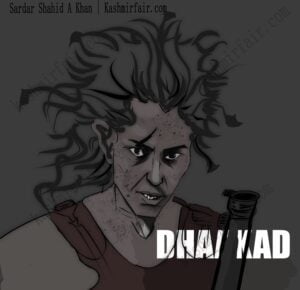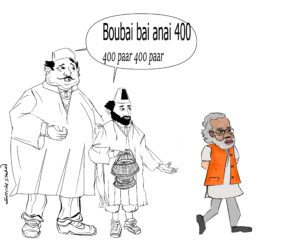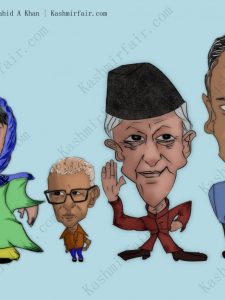What is Ai Art?
Evolution of Ai art?
The evolution of AI art has been a fascinating journey that spans several decades, from early experiments with simple algorithms to the state-of-the-art techniques that exist today…
What are the applications of Ai Art?
AI art has found numerous applications in the commercial world, particularly in the domains of advertising, branding, and marketing. Its unique capabilities in generating compelling and visually engaging content have made it a valuable tool for businesses to enhance their campaigns and connect with their target audiences.
Ai Art Generation
The evolution of AI art has been a fascinating journey that spans several decades, from early experiments with simple algorithms to the state-of-the-art techniques that exist today. Here’s a broad overview of this evolution:

The roots of AI art can be traced back to the early days of artificial intelligence research. Early pioneers like Alan Turing and AARON (created by Harold Cohen) laid the foundation for exploring computational creativity.
These early experiments involved basic rule-based systems and algorithms attempting to mimic artistic processes.
In the 1980s, expert systems and rule-based approaches dominated AI art generation. Programs were developed to follow predefined rules set by artists or art historians to generate simple artworks. While limited in creative autonomy, these systems paved the way for more sophisticated methods.

The 1990s saw the emergence of evolutionary art, where genetic algorithms were employed to generate art. These algorithms mimicked the process of natural selection, evolving art pieces over time by combining and mutating visual elements. This approach allowed for a higher degree of creativity and variation in generated artworks.
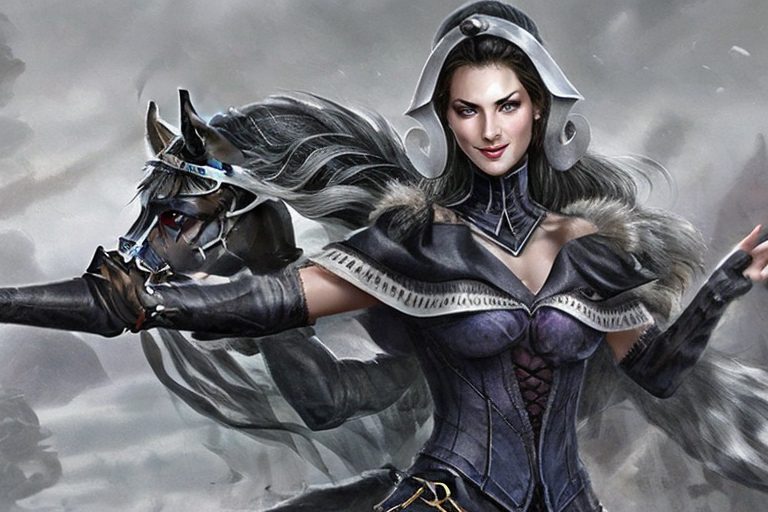
With the advent of more powerful computing resources, neural networks and deep learning gained prominence. Artists and researchers began experimenting with neural networks to generate abstract and visually intriguing art. However, during this period, AI art was still relatively niche and not as widely recognized in the mainstream art world.
A neural network is a type of artificial intelligence that mimics the way the human brain works. It consists of many interconnected units called neurons, which can process information and learn from data. Neural networks can be used for various tasks, such as speech recognition, image analysis, natural language processing, and more
Neural networks are inspired by the biological neural networks in the brain, which are composed of billions of cells called neurons. Each neuron can communicate with other neurons through connections called synapses. The strength of these connections can change based on the activity and experience of the neurons. This allows the brain to learn and adapt to different situations
Neural networks are one of the most powerful and popular tools in machine learning and deep learning. They can learn complex patterns and relationships from large amounts of data, and they can improve their performance over time. Neural networks are also flexible and adaptable, as they can be designed and trained for different purposes and applications.

Generative Adversarial Networks (GANs) Revolution (2010s) in Ai Art Generation
- The introduction of Generative Adversarial Networks by Ian Goodfellow in 2014 marked a significant turning point in AI art generation. GANs consist of two neural networks, a generator, and a discriminator, which work in tandem to create more realistic and compelling images. GANs became a game-changer in the field of AI art, leading to impressive results and newfound interest from artists and the general public alike.
Another notable development in AI art was the rise of style transfer techniques, where AI algorithms could transfer the style of one image onto another, leading to visually striking results. Additionally, image-to-image translation techniques allowed for the transformation of images from one domain to another, such as turning sketches into realistic images or aerial photos into maps.
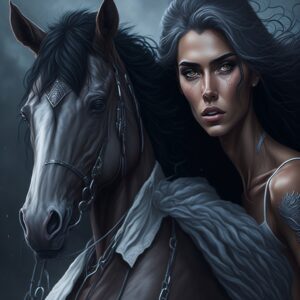
In 2021, OpenAI introduced DALL-E, a language-driven image generation model capable of creating complex and imaginative images from textual prompts. This marked a significant advancement in AI art, allowing users to generate highly specific and surreal artworks. Additionally, OpenAI’s CLIP, a multimodal vision-and-language model, further expanded the possibilities of AI-generated art.
As AI art techniques matured, artists began embracing these tools as collaborators rather than merely using them as standalone generators. Human-AI collaborative art projects became more common, where artists utilized AI algorithms to enhance their creative processes, explore new ideas, and push the boundaries of artistic expression.
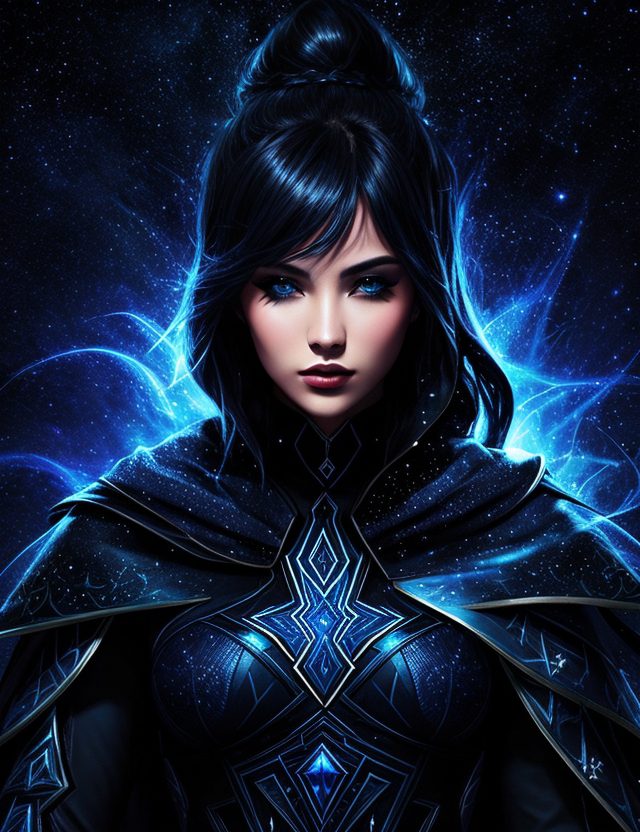
Adoption and Recognition in the Art World- Ai Art Generation
Over time, AI-generated art has gained recognition in the art world, with AI artworks being exhibited in galleries, art fairs, and museums. Some AI-generated artworks have even fetched substantial prices in auctions.
As AI continues to advance, the evolution of AI art is ongoing. The interplay between human creativity and AI algorithms promises a future where AI-generated art becomes an integral part of the artistic landscape. It will be exciting to witness how AI art evolves further and how it challenges our perceptions of creativity and authorship in the years to come.
AI art has found numerous applications in the commercial world, particularly in the domains of advertising, branding, and marketing. Its unique capabilities in generating compelling and visually engaging content have made it a valuable tool for businesses to enhance their campaigns and connect with their target audiences. Here’s how AI art is being utilized in these areas:
- Personalized Content Creation: AI art algorithms can analyze consumer data and preferences to create personalized visual content for advertisements. By tailoring content to individual users’ tastes, brands can improve engagement and build stronger connections with their customers.

- Dynamic Ad Campaigns: AI-generated art can be used to create dynamic and interactive ad campaigns. These campaigns can adapt in real-time based on user behavior, making the advertising experience more engaging and relevant.
Some examples of dynamic ads are:
LinkedIn Dynamic Ads: These are ads that automatically personalize to each professional’s own LinkedIn profile data, such as photo, company name, job title, and more. They can be used to build brand awareness, drive traffic, or convert prospects.
Facebook Dynamic Ads: These are ads that automatically show products or services to people who have expressed interest on your website, in your app or elsewhere on the internet. They can be used to promote your catalog across Facebook and Instagram.
Google Dynamic Search Ads: These are ads that automatically generate headlines and landing pages based on the content of your website. They can be used to fill in the gaps of your keyword-based campaigns and capture additional search demand.
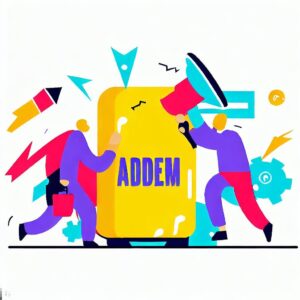
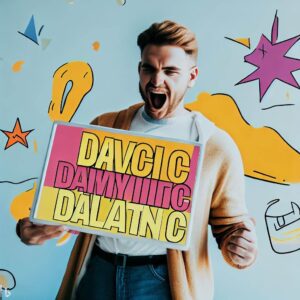
- Brand Identity and Logo Design: AI art can assist in the creation of unique brand identities and logo designs. By analyzing a brand’s values and aesthetics, AI algorithms can generate logo options that align with the brand’s message and resonate with its target audience.


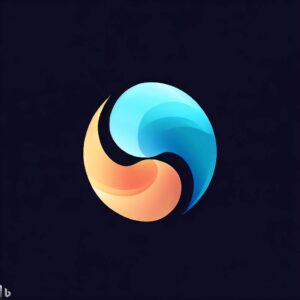
- Visual Content Generation for Social Media: Social media platforms rely heavily on visual content. AI-generated images, animations, and graphics can help businesses maintain a consistent and visually appealing presence across social media channels. Ai Art Generation


- A/B Testing and Optimization: AI art can be employed to create multiple variations of ad creatives for A/B testing. By analyzing the performance of each variant, businesses can optimize their campaigns to achieve better results.
- Artistic Product Visualization: AI-generated art can help businesses create visually stunning product visualizations for online stores and marketing materials. This allows potential customers to better understand the products and visualize how they fit into their lives.
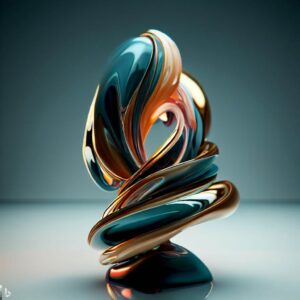
- Virtual and Augmented Reality Marketing: AI art can be integrated with virtual and augmented reality experiences to create immersive marketing campaigns. This technology allows consumers to engage with products and brands in novel and exciting ways.
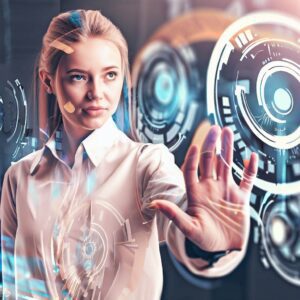
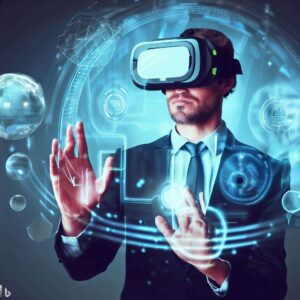
- AI-Powered Copywriting and Content Generation: AI-generated art can be complemented by AI-generated copywriting, enabling businesses to automate content creation for various marketing materials, including blog posts, social media captions, and email campaigns.
- Creative Collaboration with Artists: Some brands have partnered with artists and AI algorithms to co-create unique and limited-edition artworks. These collaborations generate buzz around the brand while also supporting artists who are exploring new creative avenues with AI.
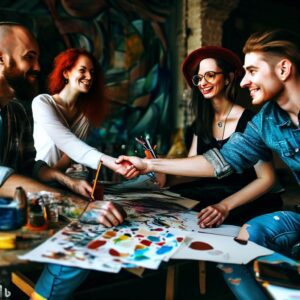
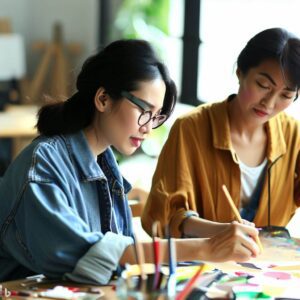
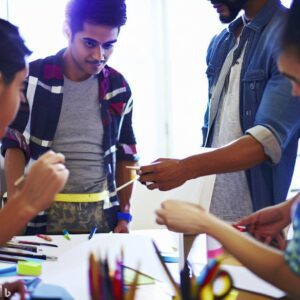
- Data Visualization: AI-generated art can be used to create visually appealing data visualizations, making complex data more accessible and engaging for audiences.
Some examples of data visualization are:

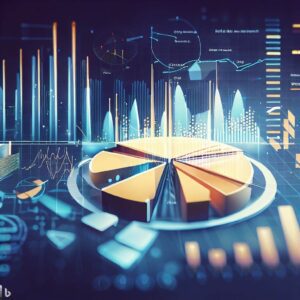
- A pie chart that shows the percentage of market share for different smartphone brands
- A line graph that tracks the changes in global temperature over time
- A map that displays the distribution of COVID-19 cases by country
- A scatter plot that compares the relationship between height and weight for a sample of people
- A bar chart that ranks the top 10 movies by box office revenue
Ethical considerations
While AI art offers significant benefits in commercial applications, businesses must also be mindful of ethical considerations and ensure transparency when using AI-generated content in marketing campaigns. Striking the right balance between creativity, authenticity, and commercial objectives is crucial to making the most of AI art’s potential in advertising, branding, and marketing.
The impact of AI art on visual storytelling and narrative creation is profound, offering new creative possibilities and challenging traditional approaches. AI-generated art has the potential to revolutionize how stories are told visually, and it affects various aspects of narrative creation:
- Automated Visual Content Creation: AI algorithms can generate diverse and high-quality visual content rapidly. This includes illustrations, concept art, and scenes that can be used to support narratives in various mediums like books, comics, and movies.
- Enhanced World Building: AI-generated art can help creators bring fictional worlds to life with detailed landscapes, architecture, and characters. This assists authors and artists in developing more immersive and believable settings for their stories.
- Visual Inspiration for Writers: Writers can use AI art as a source of inspiration for their storytelling. By exploring AI-generated images, writers can spark ideas and create unique and imaginative narratives based on those visual cues.
- Customized Visuals for Storytelling: AI art can tailor visual elements to suit different audiences or genres. Whether it’s creating child-friendly illustrations for children’s books or dark and gritty artwork for graphic novels, AI-generated visuals can adapt to the specific tone and style required for each story.
- AI-Driven Interactive Storytelling: AI-generated art can be incorporated into interactive storytelling experiences, such as video games or choose-your-own-adventure narratives. The ability to dynamically generate visuals based on user choices enhances immersion and interactivity.
- Reviving Lost or Incomplete Artworks: AI algorithms can restore or complete fragmented or damaged artworks from the past. This has the potential to uncover hidden narratives in historical art and offer fresh perspectives on historical events.
- Incorporating Visual Emotion and Style: AI-generated art can evoke emotions through visual storytelling by infusing specific styles, moods, or atmospheres into the artwork. This helps create a more emotional connection between the audience and the narrative.
- Collaboration between AI and Human Creators: AI-generated art doesn’t replace human creativity but can serve as a collaborative tool. Artists and writers can work alongside AI algorithms to explore new visual directions, character designs, or settings, fostering a hybrid creative process.
- Faster Iteration and Experimentation: With AI art, creators can quickly generate and experiment with various visual concepts. This rapid iteration enables artists and writers to explore different storytelling approaches and find the most effective visual language for their narratives.
- Cultural and Social Reflections: AI-generated art can provide insights into the cultural and social context in which it was trained. Creators can use this perspective to infuse narratives with commentary or reflections on contemporary issues.
It’s important to note that while AI art offers exciting possibilities, it also raises questions about authorship, originality, and the role of human creativity in storytelling. Creators must consider the ethical implications of using AI-generated art and strike a balance between automation and maintaining the essence of human expression in their narratives. Overall, the integration of AI art in visual storytelling opens up a new chapter in creative exploration and paves the way for innovative and engaging narratives across various mediums.
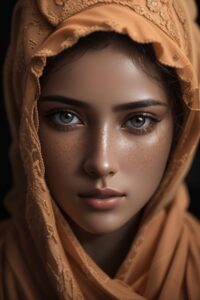
Integrating AI-generated content into art curricula can offer students valuable opportunities to explore and engage with cutting-edge technology and creative processes. AI art in education can enhance traditional art instruction, encourage critical thinking, and expose students to the intersection of art and technology. Here are some ways AI-generated content can be integrated into art curricula:
- Introduction to AI in Art: Introduce students to the concept of AI-generated art, its history, and its potential applications. Explain the role of AI algorithms in creating art and how they can augment the creative process.
- AI Art Tools and Software: Familiarize students with AI art tools and software that allow them to create AI-generated art. Provide hands-on experience with popular AI art platforms and applications.
- Collaborative AI Art Projects: Encourage students to work on collaborative projects where they incorporate AI-generated content into their traditional art pieces. This exercise fosters creativity and experimentation in combining human and AI creativity.
- AI-Driven Art Critique: Analyze and critique AI-generated artworks to understand the algorithms’ influence on aesthetics, style, and emotion in art. This exercise helps students think critically about the implications of AI in artistic expression.
- AI Art History and Theory: Integrate AI art into art history and theory lessons. Explore the impact of AI on art movements, aesthetics, and the changing role of the artist in the digital age.
- Ethical Considerations in AI Art: Engage students in discussions about the ethical implications of using AI in art creation, including issues related to authorship, ownership, and cultural representation.
- AI Art as a Medium for Social Commentary: Encourage students to use AI-generated content as a medium to explore social issues, challenge norms, and express their unique perspectives on contemporary topics. Ai Art Generation
- AI Art Exhibitions and Showcases: Organize exhibitions or showcases that feature AI-generated art created by students. This provides students with a platform to share their work and helps build awareness of AI’s role in the art world.
- AI-Generated Art in Animation and Storytelling: Introduce AI-generated content in animation and storytelling classes. Students can explore the potential of AI in generating backgrounds, characters, and other visual elements for their projects.
- AI for Art Restoration and Preservation: Teach students about the application of AI in art restoration and preservation, allowing them to understand how technology can contribute to the conservation of cultural heritage.
- AI and Mixed-Media Art: Encourage students to explore mixed-media approaches, combining traditional art techniques with AI-generated content, such as style transfer or image manipulation.
- AI-Driven Art Competitions and Challenges: Organize art competitions or challenges focused on AI-generated content. This fosters healthy competition and motivates students to experiment with AI in their creative process.
- AI Art Workshops and Guest Speakers: Invite AI artists, researchers, or experts to conduct workshops or give talks about their experiences with AI in the art world. This provides students with exposure to real-world AI art applications and insights.
By integrating AI-generated content into art curricula, educators can prepare students for a future where AI and art will increasingly intersect. It empowers students to embrace technology as a creative tool and equips them with the skills and knowledge to navigate the evolving landscape of AI in the arts. Additionally, fostering discussions about the ethical and philosophical aspects of AI art helps students develop a critical and reflective approach to their own creative practice.
AI art has the potential to transform urban spaces by bringing innovation, interactivity, and creativity to public art installations in the context of smart cities. Integrating AI-generated content into urban environments can enhance the overall aesthetic appeal, engage communities, and contribute to the technological advancement of cities. Here are some key aspects of AI art and its impact on urban spaces:
- Interactive Art Installations: AI-generated content can be used to create interactive public art installations that respond to the presence and actions of passersby. Sensors and AI algorithms can detect and interpret human movement, gestures, or sound, triggering dynamic visual displays or audiovisual experiences. This fosters a sense of engagement and interaction between the artwork and the community.
- Data-Driven Art: AI algorithms can analyze real-time data from various sources, such as weather conditions, air quality, or social media feeds, to generate art that reflects the dynamic nature of the urban environment. This data-driven art can provide visual representations of urban phenomena and encourage dialogue about relevant issues.
- Artificial Intelligence in Urban Design: AI art can inform urban design by generating visual simulations or virtual models of proposed architectural or landscape changes. This allows city planners, architects, and policymakers to visualize and assess the potential impact of urban interventions before implementation.
- Augmented Reality (AR) and Virtual Reality (VR) Experiences: AI-generated art can be integrated into AR or VR experiences that overlay digital content onto the physical urban environment. This technology enables users to explore immersive and interactive art experiences as they navigate the city, blurring the boundaries between physical and digital realms.
- Smart City Connectivity: AI art installations can be interconnected with other smart city infrastructure, such as lighting systems, transportation networks, or data sensors. This connectivity enables synchronized and coordinated visual displays that enhance the overall urban atmosphere and create cohesive urban experiences.
- Community Engagement and Social Cohesion: AI-generated public art installations can foster community engagement by providing shared experiences and spaces for cultural expression. They can become points of convergence and catalysts for social interaction, promoting a sense of belonging and cultural diversity within the urban environment.
- Adaptive and Evolving Artworks: AI algorithms can continuously learn and adapt to the urban environmenAi Art Generationt, resulting in artworks that evolve and transform over time. This dynamic nature of AI-generated art installations ensures that the urban landscape remains vibrant and ever-changing.
- Artistic Expression and Cultural Identity: AI art installations can celebrate and amplify the cultural identity of a city by incorporating local narratives, symbols, and artistic traditions. They provide a platform for artists to express their unique perspectives and contribute to the cultural fabric of the urban space.
- Public-Private Collaborations: AI art in urban spaces often involves collaborations between artists, city governments, technology companies, and local communities. These partnerships facilitate the integration of artistic creativity and technological expertise to create impactful and sustainable public art installations.
- Tourism and Economic Development: AI-generated public art installations have the potential to attract tourists, generate foot traffic, and stimulate economic activity in urban areas. They can become landmarks or tourist attractions that contribute to the cultural and economic vitality of the city.
As cities embrace the concept of smart cities and aim to enhance the livability and connectivity of urban spaces, AI art offers an exciting avenue for artistic innovation and community engagement. By integrating AI-generated content into public art installations, cities can create unique and immersive experiences that reflect the spirit of technological advancement and artistic expression.
Also Read:
India’s Moon Mission- Chandrayaan-3
What is Artificial Intelligence?

